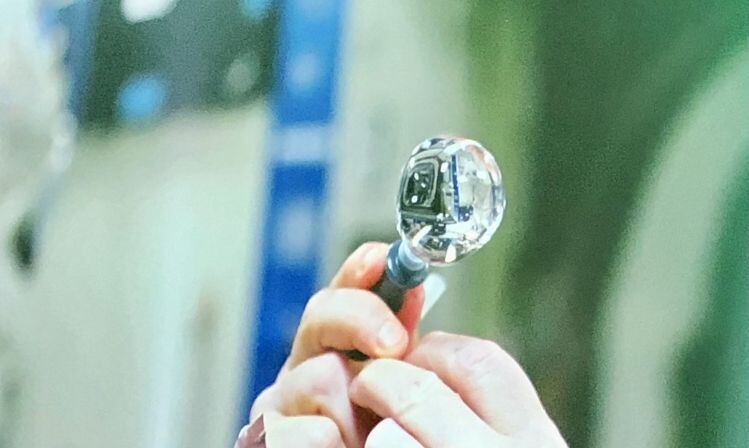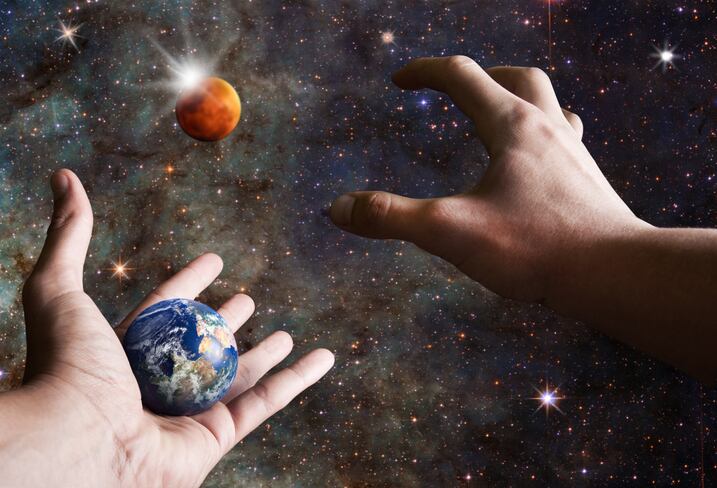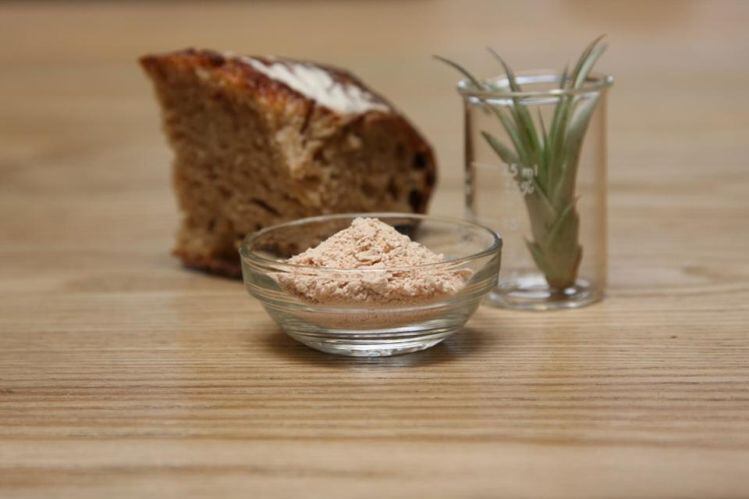Put another way, said NASA: “The food along with other supplies, will very likely have to be pre-positioned [ie. sent in advance of the human cargo], waiting for their arrival, so shelf-life becomes a huge challenge.
“Right now, with current propulsion technology, [it’s] six months to Mars, and... 18 months between possible launches. A round trip mission to Mars will be close to three years, so adding in the time to produce, package, launch and pre-position the food, the food that the crew eats on the six-month flight home will be at least five years old… and possibly more.
“We can make food that's safe from a microbiological perspective for that length of time, but we can't stop the chemical changes that occur. Those changes cause the quality and the nutritional content of the food to degrade, so how can quality and nutritional content be maintained?”
Packaging waste: ‘How are you going to use reuse it or how do you even throw it away?’
Panelist Dr Michelle Perchonok (now retired), who spent 17 years working at the NASA Johnson space center as manager of the human research program, explained: “Developing a food system for a Mars mission has got to be safe, nutritious, acceptable, and not use up too many of the vehicle resources. So that's power, volume, mass, and crew time.
“If we had the International Space Station food system, the packaged food system, to feed a crew of six for three years on a Mars mission would take over 12,000 kilograms of food or over 26,000 pounds of food, of which 17%, or almost 4,500 pounds, is packaging waste. What are you going to do with it? How are you going to use reuse it? How do you even throw it away? So things have to change.”
She added: “The food is going to be pre-positioned [sent to Mars in advance of the human cargo], because there's no way a vehicle is going to be able to carry it all at the same time, so they'll carry six months’ worth of food for the crew. But are we sure it's not going to be damaged when it drops to the ground?
“In any case, we probably need a five- to seven-year shelf life for this packaged food. And that packaged food right now has at best a three-year shelf life and most of it not even that much. We're losing vitamins, we lose acceptability.”

The Deep Space Challenge, a collaboration between NASA's Centennial Challenges Program and the Canadian Space Agency, has identified a clutch of technologies that could be deployed on a Mars mission, including:
Fast-growing microalgae, novel dehydration technologies, food from insect cell cultures, closed loop hydroponics systems, fruit cells grown in nutrient rich media to form edible berry structures with skins and pulp, cell-cultured meat, ‘space bread’ that astronauts can bake in a bag, a microbial-based food production system that utilizes plastic and biomass waste as the carbon source, and single-cell protein production by means of gas fermentation.
Read more about some of the technologies HERE.

Centennial Challenges
NASA is currently exploring multiple strategies to feeding crews on Mars missions, from technologies to extend the shelf life of existing packaged foods, to new approaches to producing food during the mission using microbes from algae to fungi, to growing mammalian cells to make cultivated meat. It is also looking to crowdsource ideas from startups through its Centennial Challenges Program, which includes the Deep Space Food Challenge collaboration with the Canadian Space Agency.
The microbiome in space: ‘Can we colonize astronauts with microbes that can protect them against things like mental health risks or radiation damage?
One such startup is Massachusetts-based Holobiome, which has created one of the world's largest collections of human gut microbes and recently teamed up Unilever to discover ingredients that target the gut-brain axis.
Holobiome founder and CEO Dr Phil Strandwitz said understanding how to harness the billions of bacteria that populate our bodies to optimize the health of astronauts on long-haul missions is an exciting new area of research for the company.
“We have built a donor network of around 9,000 people that poop for us on demand… We then take the samples, isolate very large panels of human gut bacteria, and systematically screen for how these microbes influence biology [in a way] that we think matters for health and disease.
“The end goal is can we have the next generation of probiotics? Can we have smarter food? Can we perhaps cure a disease rather than treat it? And then can we actually colonize astronauts with microbes that can protect them against things like mental health risks, or radiation damage?”
He noted that there is “significant evidence that suggests microbes in the gut” may be involved in depression, with food and drugs both potentially impacting this gut/brain axis.
Gut bacteria and depression
When it comes to drugs, he said, “There's an increased risk of developing depressive like behavior if you take antibiotics, but not with antivirals and antifungals. That suggests it's not just an infection that's associated with an increased risk, it could actually be what's being killed by those antibiotics [ie gut bacteria].
“It's been done almost a dozen times at this point where you can take communities of microbes from people with depression, put them into rodents, and actually transmit depressive-like behavior. But if you take a microbiome from people who are healthy and conduct that same experiment, you don't get that transmission, so this is really astonishing.
“So we did a project with TRISH (Translational Research Institute for Space Health) looking at two mechanisms where there's good evidence they are linked to depression, we found microbes that hit those mechanisms in a potentially therapeutic way, and that led us to have a single strain of bacteria that we think could actually perhaps help combat things like depression.”
‘Why not have a little briefcase - maybe inside of us - of humanity's microbes?’
He predicted: “A map of how human microbes influence our biology will be done in 10 years with the technology that we have. The next piece will be an atlas of that functional potential that’s ready to use. So I'm talking about large panels of microbes that you can ship along on a Mars mission, maybe even within the astronauts... and you can isolate them later.
“These microbes can produce vitamins, you can engineer them to produce drugs, or use them to increase plant yield and growth. So why not have a little briefcase - maybe inside of us - of humanity's microbes that we evolved with for such a long time, to enable health, to enable food, to enable colonization of Mars?”
Dr Dorit Donoviel, executive director at TRISH, added: “Bob Langer at MIT has developed a pill that you could swallow that can release microbes over a six-month period.”
As for radiation, to which the astronauts will be exposed on a long mission, she said, “At my previous institute, we did a radiation study and looked at microbes in the gut and there was a shift in the types of microbes in mice that were exposed to a space radiation equivalent, and they went to a less friendly form of microbes under those conditions.”
Cooking: ‘You can’t have open flames in space’
Reminding delegates that cooking is very different in zero gravity – “You can't have open flames in space” – former astronaut Scott Parazynski said astronauts’ current food options are “akin to a camping trip,” adding: “So maybe there’s a can of chicken that you put in a convection oven and heat that up. Or a pouch of potatoes au gratin; it has to be dehydrated and shrunk down as weight is at a premium.”
He also noted that spicy foods are popular in space, because astronauts’ sensory systems can be muted. “When we go up into space, there's a fluid shift that occurs. So here on Earth, we have fluids that pool in our lower bodies and when we go up into space in the absence of gravity, we get a puffy face initially and it affects our taste buds. And so we tend to like spicier foods.”
Dr Michelle Perchonok added: “Now on the International Space Station currently, there are over 200 foods, but that includes the beverages, so there's probably in the order of only 140 different foods, so things can get pretty boring. The food doesn't always look good, but at least let's give it the taste. So for sensory evaluations, on a nine point hedonic scale, if the food does not rate a six or higher, it doesn't get [approved].”
Tomatoes that scrub more carbon dioxide from the air, and growing food on lunar regolith?
Dr Donoviel said she was particularly excited about ‘space tomatoes’ – small tomato plants that have been genetically engineered to scrub more carbon dioxide from the air, while Dr Perchonok said 3D printing had real promise. “If we put vitamins into a very dense [3D-printed] food matrix, maybe we can keep them stable for longer.”
But what about growing food on the surface of the Moon or on Mars?
According to Parazynski, “There have been experiments looking at lunar regolith and growing food in it. It can actually sustain root systems and grow properly provided there is light and things of that nature. Obviously hydroponics in the absence of soil is possible as well.”



